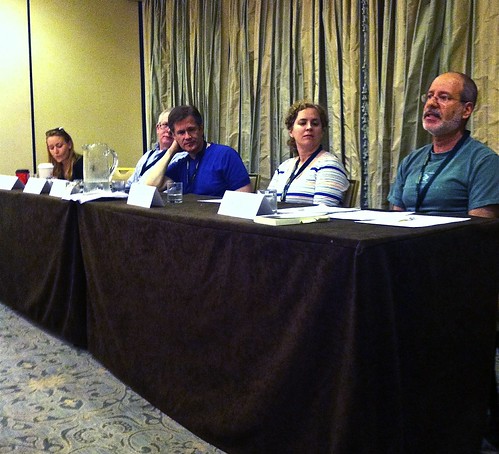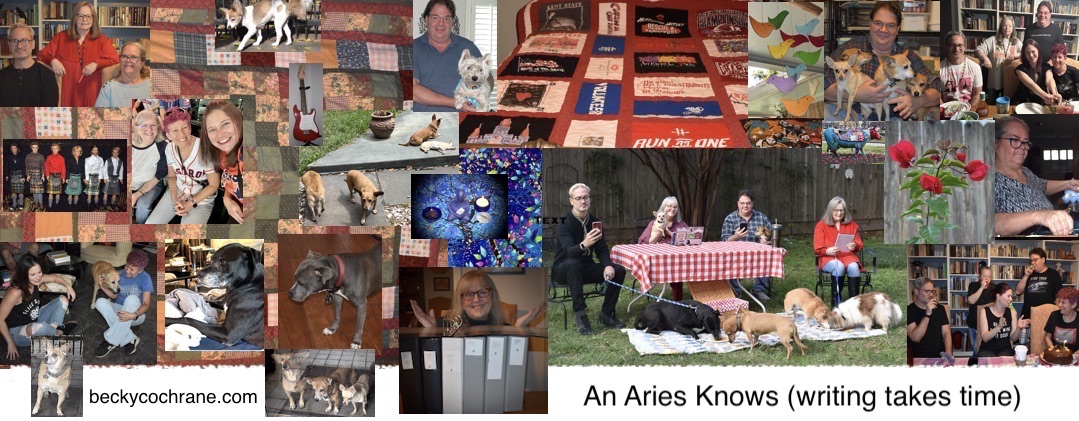Over the last year or so, I’ve had a lot of fun reading Timmy’s The Idea Jar writing prompts and ‘Nathan’s #canadawrites tweets. Many of them sound like great first lines. Writers also find good first lines in news stories, overheard conversations, and our own verbal reactions to some life situation. (“I hate Christmas!” I complained to a few coworkers a couple of decades ago, and one of them said, “How can anyone hate Christmas? I worry about you.” Many years later, “I hate Christmas!” I said to Tim, and “There’s your first line,” he answered.) Whether you plot out your entire story in advance, write it as the Muse hits, or share it as a spoken anecdote first and then write it, you need to hook your reader from the very beginning.
Once you have your first line: then what?
In media res literally means “in the middle of,” and is a writing technique in which a narrative–whether a short story, novel, play, epic poem–begins at its midpoint. (This also applies to film, but I’m a writer, not a filmmaker.) Most agents and editors will tell you that nothing is more deadly boring than receiving a manuscript that offers basically an “in the beginning” start, a ton of exposition of world building and back story, and somewhere around page 43 finally offers up some action. In fact, most of those readers never make it to page 43, and there went your literary dreams into the recycle pile.
At Saints & Sinners, I went to “Miniature Gems: Crafting Successful Short Fiction” because I edit short fiction, and I rely on an intuitive sense of what works when I read it. I say intuitive, but I’m sure it’s derived from my zillion years of reading, studying, and writing critically about short stories, and my fewer than a zillion years of teaching them. I was looking forward to hearing short story writers’ perspectives because I knew they’d give me more “feedback” language than comments that make me sound like that one student in the back of the class who obviously didn’t read the assignment (to paraphrase Huck Finn, “The words was interesting, but tough.”).
The panel was moderated by Elizabeth Sanders (founder of Eutherion Press; author of Feux de Joie) and the panelists were Daniel M. Jaffe (Jewish Gentle and Other Stories of Gay-Jewish Living; The Limits of Pleasure; One-Foot Lover), Jen Michalski (Could You Be With Her Now; The Tide King; From Here), David Pratt (Bob the Book; My Movie), and William Sterling Walker (Desire: Tales of New Orleans).

Delightfully, their writing techniques and approaches were as different as the individuals themselves. I say “delightfully” because there really is no one method to start or finish or revise a short story. Over time, writers develop their own systems, and then when they feel stale, they shake it up and do it a different way. One of the panelists often writes a short story the way I do: I create the entire thing in my head first; when I sit down to write it, nothing interferes with the narrative flow. Another panelist starts with an ending, so the writing process entails how to get there. They had their own metaphors for how to set up in media res and what dropping a reader into the middle of things entails. One of those metaphors involved a door. If the real story starts behind the door, why does a reader want to spend a lot of time walking to the door, seeing the scenery, remembering doors from the past, thinking about different doors, blah blah blah. Get your reader behind that door.
On the other hand, you don’t want to hit your readers with the impact of what’s behind the door too soon. Sometimes when Tim and I receive a new story, his first comment to me will be, “Why do I care?” I know then that the writer has forced a situation or characters on him too quickly. If you start with your biggest moment, are the rest of the pages going to be back story or flashbacks? You need to hook your reader with your first line–“I want to read more!”–but you don’t need to give away the best part of your story. Drop the readers into the action, but don’t give them everything. For me, a fine example of doing this right is William Faulkner’s “A Rose for Emily.” The reader is at a funeral as the story begins, but he’s not expected to weep or feel sad or sorry. He’s just an observer. Then he begins to get details of the past, not always linear, through other people’s memories and conversations. As the narrative unfolds, he’s learning about the past but also being given foreshadowing. At the end, when a literal door is broken down, the reader is stunned, not because he wasn’t prepared for the truth, but because of that one last chilling detail Faulkner saved for last.
In addition to structure, we talked about pacing. Pacing has to do with the story arc, but also I think with the language itself. There have been times that Tim and I will say, even reading someone’s Tweets, “X has no sense of the rhythm of language.” There is a benefit to reading your own work aloud–not to other people, but to yourself. When you read your printed pages out loud in an empty room, you can literally hear whether the rhythm and music of your language works or not. Do you start getting bored and rushing through certain paragraphs? Your reader will, too. Perhaps there’s too much exposition without anything to break it up. Does the dialogue ring false? Does it sound stilted or unnatural when you read it aloud? Or does it have too many of our spoken speech patterns? We often begin sentences with “Well,” but it’s annoying if all your characters constantly do that, just as it would be if they were always inserting “you know” or “uh” into everything they say, as many of us do when speaking. Maybe one character can have some of those spoken idiosyncrasies, but use them sparingly and don’t let all of your characters sound alike.
As the description for this panel said, “To be successful, writers must take on the spirit and attention of lapidaries, polishing every sentence like gemstones to string together a narrative with dazzling effects.” Our stories are unique, and our storytelling should be, too. But reading other people’s short stories and hearing writers talk about their techniques are opportunities to learn how to polish our writing.

By the way, I really appreciate your reflections on Saints & Sinners – it’s the next best thing to being there in person!
I’m glad you’re getting something out of the posts. I wish I’d taken better notes, because I know I’m forgetting things that were quite brilliant.